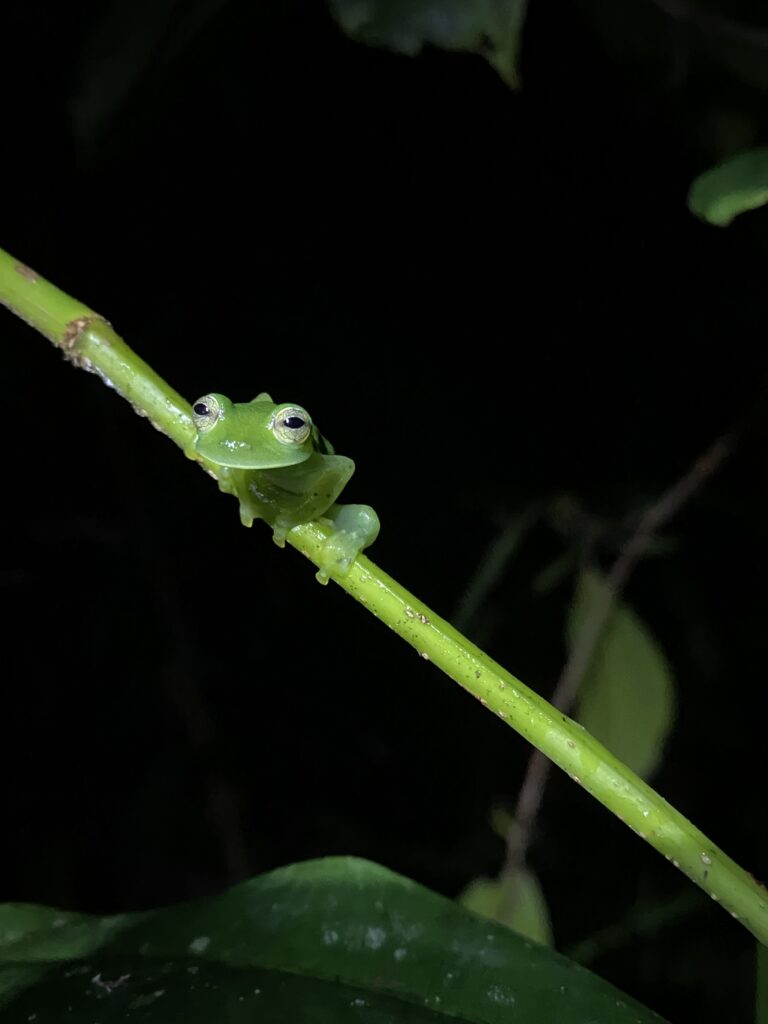
When thinking of amphibians, some of the first thoughts that may come to mind are water, lush greenery, soft (or perhaps loud) calls, and webbed hands and feet. While these idyllic thoughts can be true, amphibians are one of the most delicate and easily threatened organisms. These small creatures are sensitive in many aspects: their permeable skin makes them sensitive to changes in humidity, overall climate, and deadly fungal infections; their fragile eggs often hatch at a critically low rate; habitat destruction creates difficulty in migrating to deposit eggs, or reproduce; just to name a few.
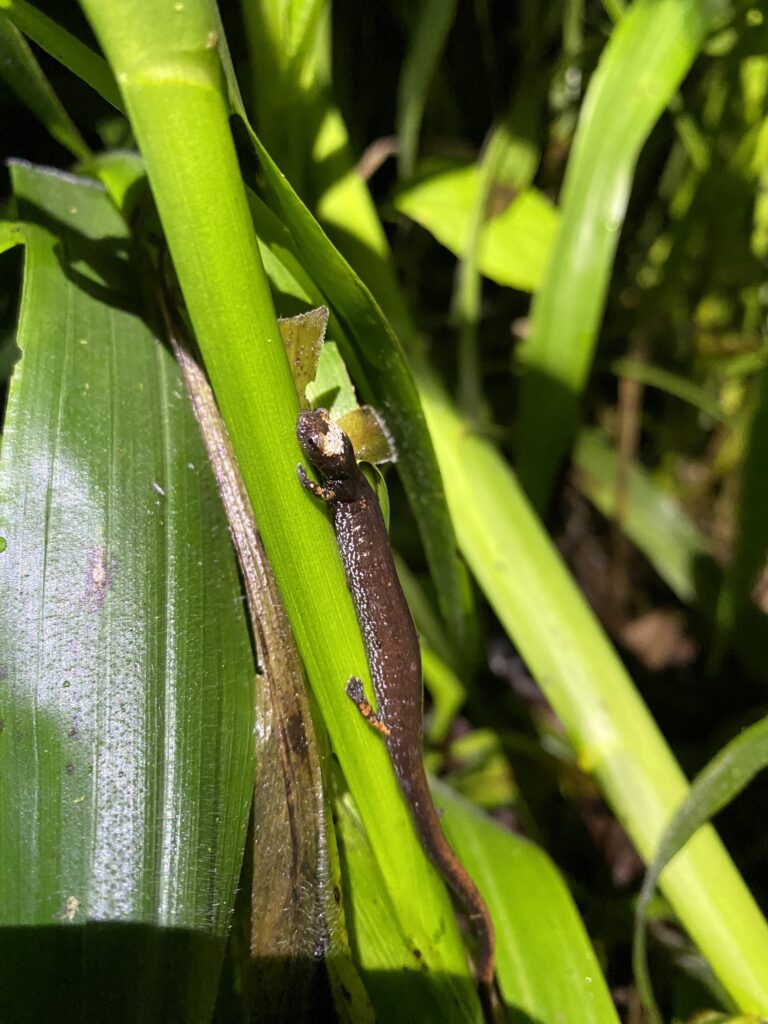
Although, there are some misconceptions about amphibians – frogs in particular – that are important to distinguish. For example, not all frogs need water to lay eggs, as some can lay them into a hole in the ground. Or, not all frogs have webbed hands or feet. Maybe most surprisingly, not all frogs begin as tadpoles, but instead hatch out of the eggs as tiny froglets. This last adaptation is particularly advantageous, as it allows for more freedom in reproduction processes. But what about the ones that need water to lay eggs?
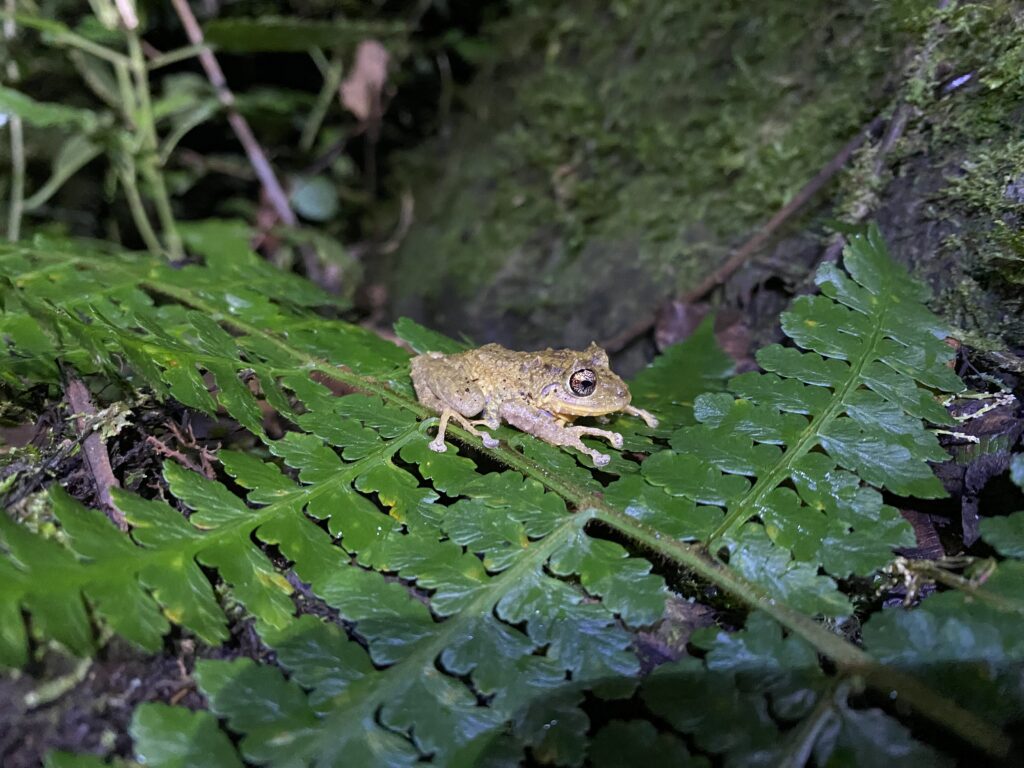
The delicateness of freshwater habitats directly coincides with the fragile egg-laying process, as frogs are often routine egg layers and will revisit the same site every year to deposit their eggs. However, as the climate changes, alongside habitat fragmentation/destruction, these sites are being continuously disrupted. At Cloudbridge, we are fortunate to have an abundance of freshwater, as the Pacific Chirripó River runs straight through the reserve, bringing countless streams into the property. Many of these streams have fast flowing water, and don’t always provide an adequate site for egg deposits. The question is, in what ways can humans possibly support aquatic egg laying frogs to aid in their reproductive success?
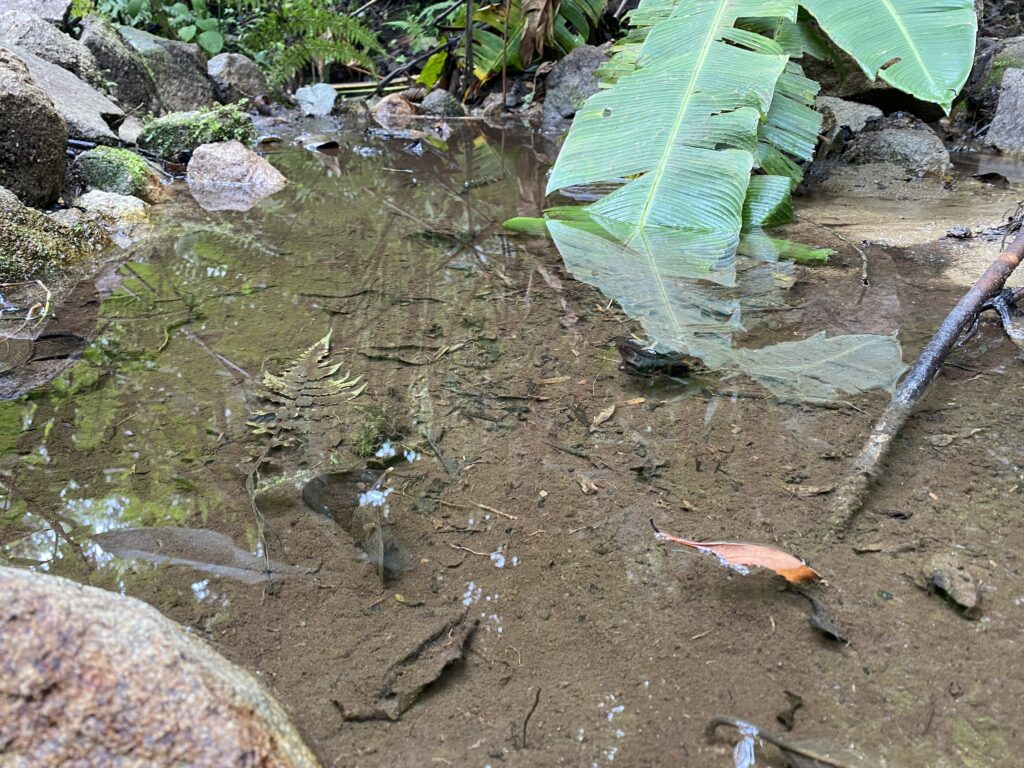
As a long term research project, staff member Maddy Peterson decided to investigate this possibility in collaboration with SINAC (Costa Rica’s national park service). By creating an “artificial” pond out of natural materials within the cloud forest, the objective was to see if any of the water dependent frogs would use an introduced pond to deposit their eggs. The pond emulated natural pond characteristics (eg. differing water depths, flora in and around the pond, hiding spots under rocks, etc), and was monitored over a six month period. To find out about the results of this project, you’ll have to read the full report here.
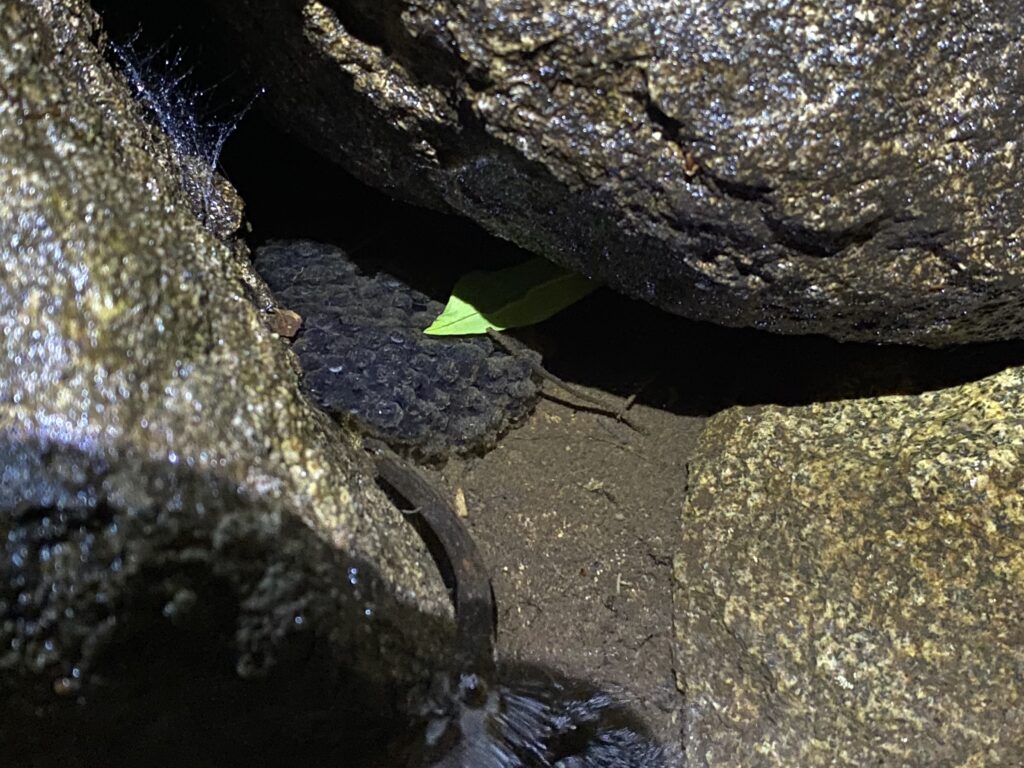
Suggested Reading:
- What fungus affects amphibians? If you’ve ever heard of a chytrid fungus (think ‘zombie ants’ or ‘The Last of Us’), there’s a specialized fungus called Batrachochytrium dendrobatidis – Bd for short – that is extremely detrimental to frog and salamander populations.
- It’s a curious idea to imagine frog eggs being deposited into leaf litter or into a tree trunk. But it’s actually quite common! The Craugastor family is the most common frog group at Cloudbridge to lay eggs in leaf litter and skip the tadpole stage, but it happens all over the world, like this frog in Mexico.
- It’s possible to build a frog pond of your own and support their populations in your backyard! If a stream is not readily available to create a naturally filling pond like mentioned in the research report above, there are other ways to create a sustainable pond that frogs can use when mating season comes around. It’s a benefit for everyone, as the frogs have a reliable place to lay eggs, and you get to enjoy seeing the whole process (from afar).
